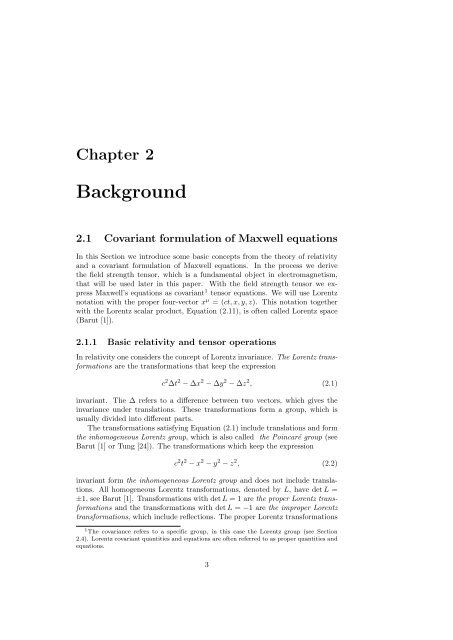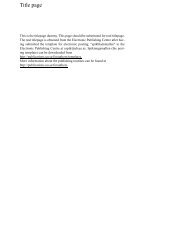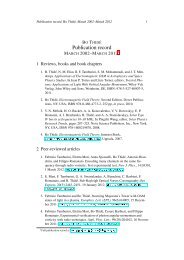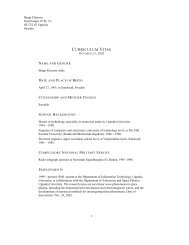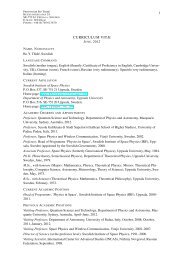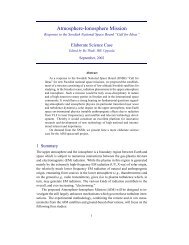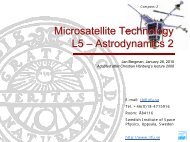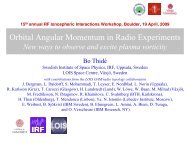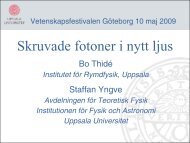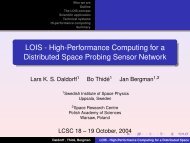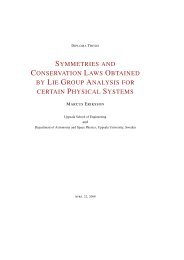Towards a covariant formulation of electromagnetic wave polarization
Towards a covariant formulation of electromagnetic wave polarization
Towards a covariant formulation of electromagnetic wave polarization
You also want an ePaper? Increase the reach of your titles
YUMPU automatically turns print PDFs into web optimized ePapers that Google loves.
Chapter 2<br />
Background<br />
2.1 Covariant <strong>formulation</strong> <strong>of</strong> Maxwell equations<br />
In this Section we introduce some basic concepts from the theory <strong>of</strong> relativity<br />
and a <strong>covariant</strong> <strong>formulation</strong> <strong>of</strong> Maxwell equations. In the process we derive<br />
the field strength tensor, which is a fundamental object in electromagnetism,<br />
that will be used later in this paper. With the field strength tensor we express<br />
Maxwell’s equations as <strong>covariant</strong> 1 tensor equations. We will use Lorentz<br />
notation with the proper four-vector x µ = (ct, x, y, z). This notation together<br />
with the Lorentz scalar product, Equation (2.11), is <strong>of</strong>ten called Lorentz space<br />
(Barut [1]).<br />
2.1.1 Basic relativity and tensor operations<br />
In relativity one considers the concept <strong>of</strong> Lorentz invariance. The Lorentz transformations<br />
are the transformations that keep the expression<br />
c 2 ∆t 2 − ∆x 2 − ∆y 2 − ∆z 2 , (2.1)<br />
invariant. The ∆ refers to a difference between two vectors, which gives the<br />
invariance under translations. These transformations form a group, which is<br />
usually divided into different parts.<br />
The transformations satisfying Equation (2.1) include translations and form<br />
the inhomogeneous Lorentz group, which is also called the Poincaré group (see<br />
Barut [1] or Tung [24]). The transformations which keep the expression<br />
c 2 t 2 − x 2 − y 2 − z 2 , (2.2)<br />
invariant form the inhomogeneous Lorentz group and does not include translations.<br />
All homogeneous Lorentz transformations, denoted by L, have det L =<br />
±1, see Barut [1]. Transformations with det L = 1 are the proper Lorentz transformations<br />
and the transformations with det L = −1 are the improper Lorentz<br />
transformations, which include reflections. The proper Lorentz transformations<br />
1 The covariance refers to a specific group, in this case the Lorentz group (see Section<br />
2.4). Lorentz <strong>covariant</strong> quantities and equations are <strong>of</strong>ten referred to as proper quantities and<br />
equations.<br />
3


